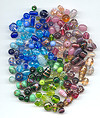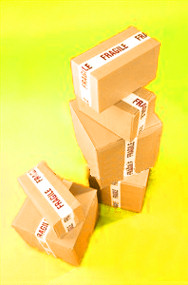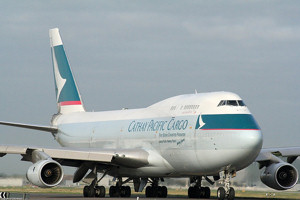Importing Beads
 At some time of other you may have thought about importing beads directly from the maker and wondered if there are savings to be made and whether you could even source some unique creations; if so don’t take another step until you have read the following. This article is useful to anyone wanting to import many kinds of product.
At some time of other you may have thought about importing beads directly from the maker and wondered if there are savings to be made and whether you could even source some unique creations; if so don’t take another step until you have read the following. This article is useful to anyone wanting to import many kinds of product.
Importing certainly does have its advantages when it comes to bead choice and selection, but there are many pitfalls to consider. Nine times out of ten you will be better off dealing with bead suppliers from your own country or one with a common language or understanding.
[Hidepost=1]
If you are really determined to import then there are many issues that you will have to deal with that people outside of the import or export business don’t widely know. And if you contact an import agent they will assume that you will have a certain level of knowledge which can be very frustrating for the newcomer.
To start with you will need to source a supplier or manufacture. There are various ways that you can do this. You can contact the commercial division of the embassy of the country you wish to import from and ask for a list of manufacturers. Or you can contact a company which specialises in product sourcing in different countries. Many of the products sourcing specialists have import/export divisions attached to them as they are familiar with many types of products.

Another way to find suppliers is to look though trade websites like allibaba or globalsources.com. Here many suppliers post information about the products and services they offer, including things like the minimum order that is required.
Before you make any commitment to placing an order it is vital to get a sample so that you can access the quality of the product that you are ordering. However, even then, it is not uncommon for your shipment to arrive and find that the beads, findings or products that you have ordered, bear little resemblance to the samples approved. Therefore it is important to place a small order first and build up a relationship of trust with your supplier. But please bear in mind that even having built up a relationship with a supplier will not prevent you from receiving some shoddy goods. This is always the risk taken when importing. Once you have paid for the goods and then had them delivered, there is very little that you can do about it. Because of this, some companies will employ their sourcing agents to provide checks on quality control before the consignment is shipped, however this a costly solution that most small importers cannot afford, which means that smaller importers are most at risk from receiving goods that are worthless from suppliers who want to offload second rate stock.
Shipping Methods
There are three main methods of shipping products from overseas.
Sea freight
Airfreight
Courier
The choice of which method you should use will be determined in most instances by costs.
Generally speaking, it is cheaper and more cost effective to have consignments of under 45 kilos send via courier. A door to door service such as DHL or FedEx should be able to arrange this for you, or you can have your suppliers arrange this and pay them the costs as part of your invoice. In a lot of cases it is cheaper to have the exporter arrange the courier for you and pay them directly as the exporter may have negotiated preferential shipping rates with certain couriers.

For shipments over 45 kilos sea freight is the cheaper option as a rule. This is especially true of for heavy or bulky items. The disadvantage however is that the delivery time is much longer. Airfreight is cheaper than a courier service but less economical than sea freight. This is the option to take if time is of the essence.
So to recap the main consideration when choosing a shipping method is the price, the weight, the bulk or dimensions and the lead in delivery time.
Sea freight options
The sea freight option is chosen by most large companies if they are shipping heavy or bulky items. The costs are low; however the lead time from shipping to arrival can be anything up to around 40 days. If you consider that you may have already waited many weeks for the manufacture of your consignment, an extra month or month and a half could be too long for you to wait to get your hands on your supplies.
With sea freight, most goods are packed and shipped in containers and the choice is a full container load FLC or a LCL a lesser container load.. A lesser container load is most used by the smaller importer as the load is then consolidated with other company’s goods travelling to the same destination. In effect, you are sharing costs.
With a full container load only your products are accommodated and this means that you can buy from different suppliers and have them shipped over in one container. A standard container is 20 feet or 40 feet long.
Apart form the advantage of the reduced freight costs, the costs of import processing fess are reduces as costs are calculated in one transaction.
With a LCL your shipment is calculated by the volume, usually in cubic metres. The rates will also reflect the charge to unload the container at the port of arrival.

List of costs to be considered:
Collection, leading and delivery from the supplier to the port
Export documentation
Storage and consolidation fees as necessary
Terminal charges
Freight charges
Customs clearance
Import Duty and VAT or Sales Tax
The destuffing charge for unloading and LCL
Storage in the even of any delay in moving the goods
Road haulage to your premises and unloading costs
Airfreight Options
Air freight is used by companies to ship lightweight, high value or urgently needed goods. The lead time can be as short as a couple of days. The costs are higher than sea freight, but these have to be weighed against the shorter delivery time.
Most of the popular destinations are serviced by many airlines. The airlines usually offer an indirect service which sends the goods to the destination via more than one airport.

List of costs to be considered:
Collection from manufacturer
Export documentation
Delivery to airline
Loading charges
Freight charges
Customs clearance
Import Duty, VAT or Sales Tax
Collection from airline
Storage in the event of delays
Road haulage to your premises
Terms of Shipping
The costs that you incur depend upon the term that you negotiate with your supplier. There are many variations but here are some common terms that you will come across and need to know:-
Ex-Works – This means that they buyer is responsible for all cost incurred from the seller’s premises
FOB – Free on Board – This means that the seller pays for costs up to the delivery port or airport of departure, including export charges.
CIF – Cost, insurance and freight. This means that the seller pays to send the goods to the port of destination and arranges a minimum insurance.
DDU – Delivered duty unpaid. The seller delivers to the buyer’s premises and pays for the cost apart from Duty and VAT or sales tax.
DDP – Delivered duty paid. This means the seller arranges to cover the cost of delivery including any duty or taxes.
Often the seller/manufacturer will have their preferred methods of terms and will often quote rates FOB or Ex-Works.
Things to consider
Import Duty – Check the rate of duty to be applied to your consignment. Different products have differing rates of duty. For example gemstone beads or real silver will attract a different rate to plastic. Contact your business advisor or Customs office to obtain the correct tariff for the product that you wish to import.
Currency – The sales transaction is negotiated in different currencies around the world, but the most popular are the US dollar and the Euro. Most countries outside the Eurozone will quote rates in US Dollars regardless of their local currency.
Exchange rates – Currency values fluctuate daily, so you need to keep an eye on your own native currency and the one that you are doing business in as it may drastically affect your business.
Money transfer – In most instances you will be required to pay a deposit at the time you place an order with the seller and then transfer the balance upon completion of order. You will have in effect paid for the goods up front in advance. So it is vital that you make necessary steps to satisfy yourself that the company that you are dealing with has a good trade history and is reliable and trustworthy. Also note that the transfer of fund overseas will attract its own costs which you will pay once when making a deposit payment and again when paying the balance.
If you are seriously considering importing beads or findings, it’s worth investing time in finding a good import export agent to help assist you in the process, who has good connections in country you are buying from.
[/Hidepost]



 Click
Click